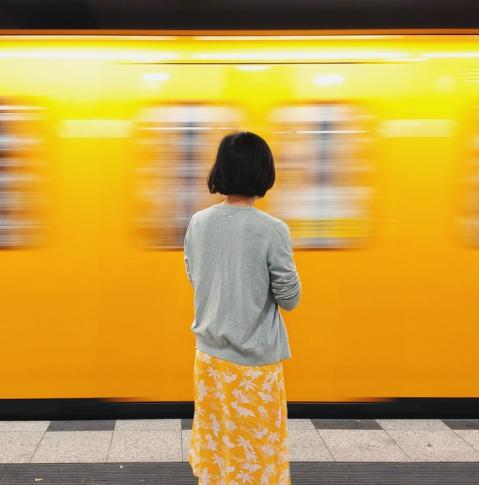
U-Bahnhof Deutsche Oper
For over 100 years a special place of interest has lain at the heart of the district of Charlottenburg in Berlin as a token of Berlin modernity: the Deutsche Oper U-Bahn station. Planned and opened during the days of the German Empire, the station has experienced an eventful history. It survived the Second World War unscathed, was renovated, restored then reopened in 2001. To the present day it serves Berliners as well as tourists all year round as a station on the U2 U-Bahn line.
Architecture of the Deutsche Oper U-Bahn station
The station was built in accordance with designs by the Swedish architect Alfred Grenander, whose work was significant in the development of Berlin into a modern metropolis. He built an initial four-platform interchange station with elaborate iron props and two 111 m long central platforms. These had skylights to bring daylight onto the platform. Later, a large entrance hall was built at the western end of the station. A second exit on the east side was constructed for reasons of fire safety almost 100 years after the building was first opened.
The wall design of the Deutsche Oper U-Bahn station
Alfred Grenander used the simple yet ingenious principle of identification colours at U-Bahn stations: Distinct colours create a contrast between the respective stations, thus helping in their recognition and differentiation. At the time of its inauguration in 1906, the walls of the Deutsche Oper station were overlaid with small grey tiles. After various renovations and a restoration, the walls have been decorated since 2002 with numerous colourful “Azulejos” tiles from Portuguese artist José de Guimarães. These tiles were a gift from Portugal to the city of Berlin. Furthermore, the names of 20 major opera composers are immortalised in the Deutsche Oper U-Bahn station.
Naming of the Deutsche Oper U-Bahn station
The original name of the U-Bahn station was “Bismarckstrasse”. Following the first renovation in 1929, however, the entrances no longer led directly to this street, thus the station was subsequently renamed “Städtische Oper (Bismarckstrasse)” taking into account the adjacent opera house. It has had its current name, the “Deutsche Oper U-Bahn station”, since 1978. The “U” in U-Bahn stands for “Untergrund” (underground) and refers to the often underground routing. However, the “U” can also be interpreted as “unabhängig” (independent), if an U-Bahn network, like Berlin’s, has an autonomously operating rail system independent of other means of transport.
The Berlin WelcomeCard: the capital’s most popular tourist ticket
You too can use the Berlin WelcomeCard for your trip to Berlin. This official tourist ticket is so much more than just a ticket and over 12 million have already been sold. Discover for yourself the benefits of over 200 discount offers with savings of up to 50% as well as free use of public transport. Choose between two ticket types: The AB zone is valid for the Berlin urban area and the ABC zone covers Berlin and Potsdam. Another alternative is the Berlin WelcomeCard all inclusive. This grants free entry to 30 top attractions in the capital.
Kurz & Knapp
Germany
